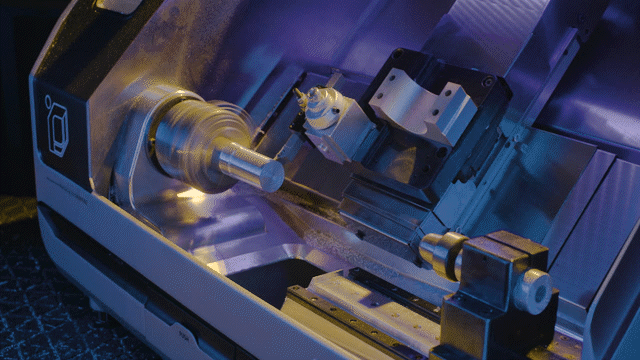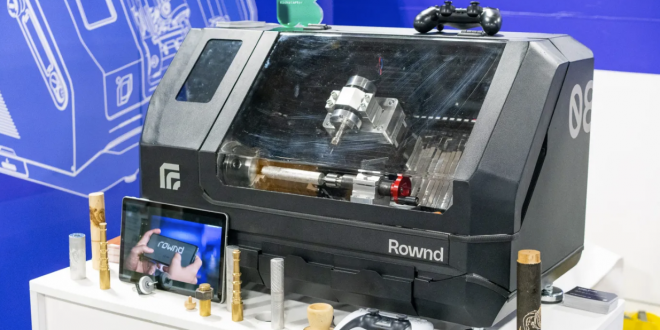I couldn’t wait to see the Rownd tabletop CNC lathe at this week’s CES in Las Vegas. I’ve been following its Kickstarter campaign for the last year, and it didn’t disappoint. At a time when personal manufacturing and DIY culture are on the rise, Rownd Lathe is a promising new entrant. Wood, metal, and plastic are just a few of the materials that can be easily shaped and formed with this little CNC lathe, making it an enjoyable entry point into the world of creation.
While beginner CNC mills have been available for some time (my mind goes to Bantam), CNC lathes have been noticeably missing from the market. In contrast to the user-friendly tools we’re accustomed to, like Makerbot for 3D printing, Glowforge for laser cutting, and Cricut for vinyl work, CNC mills—which can be purchased for less than $10,000—tend to be exceedingly difficult to operate. They are, in essence, inexpensive tools for highly experienced machinists.
Rownd enlisted the help of a materials engineer, an architect, an industrial designer, mechanical and electrical engineers, and a business analyst after seeing a need in the industry.

The software that comes with the Rownd Lathe really makes it stand out. It democratizes the design process, making it easy for novices to make their own designs or use ones from the open-source Rownd Library. The machine itself is quite reasonable, retailing at roughly $5,000.
The Rownd Lathe places a premium on user-friendliness. Its big touchscreen makes it easy to see the machine’s use duration, rotation speed, and feed rate, among other important metrics. No external computer connection is required for users to access the library, choose CAD data, and begin using the machine. Like any other CNC lathe, this one may be controlled manually using the touch interface or programmed to operate by uploading Gcode.
For a more traditional manual-style experience, a gamepad controller is also available for use with the tools. While it doesn’t quite capture the “feel” of turning metal, it’s a satisfactory compromise that guarantees this machine isn’t limited to CNC. Considering the close calls I’ve had with engine lathes, I believe it would be wise to shield myself from the fast-moving metal with a hood and controller.
Upon seeing the machine in person, I can tell it is well-made; nonetheless, it is much smaller than the majority of lathes I have used before. The machine can handle workpieces up to 6 inches (150 mm) in diameter. The maximum allowable length for the workpiece is 11.5 inches, or 300 mm. With a maximum work size of 3.25 inches (80 mm), the chuck diameter is very tiny. A 125 mm X-axis travel and a 17 3/4 mm Z-axis travel are available on the machine. All things considered, the result is a machine that, depending on your needs, may be effective for cutting pieces of manageable sizes. For a device of this size, the motor’s 1 horsepower (800 W) is more than enough.
The business claims it will begin delivering to preorder customers “in three months” and then make it accessible for ordinary purchases a couple of months later. I didn’t have a chance to test it out, however.
 Tech Gadget Central Latest Tech News and Reviews
Tech Gadget Central Latest Tech News and Reviews




